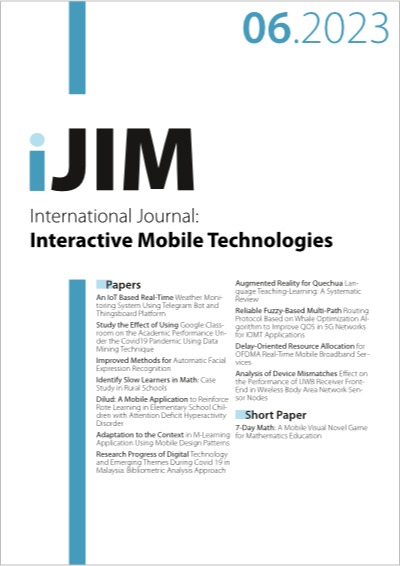Identify Slow Learners in Math: Case Study in Rural Schools
DOI:
https://doi.org/10.3991/ijim.v17i06.36903Keywords:
identify, rural school, slow learnerAbstract
Abstract— One way to identify slow learners is with an IQ (Intelligence Quotient) test. However, in rural schools, facilities for conducting IQ tests are very difficult to obtain, usually only in big cities. Whereas student identification is very necessary before students register for elementary schools, in order to determine students' abilities, so that later students can be facilitated according to their learning needs. This research is a descriptive study with a qualitative approach that aims to identify slow learners in rural schools. The participants involved were all students in four schools in one village in Indonesia. Data were obtained by conducting interviews with teachers, sorting student report cards, observing the learning process, and administering tests. The results showed that based on interviews with teachers, sorting student report cards, observing the learning process, and giving tests, there were 17 students identified as slow learners. Among them are 6 female students and 11 male students. In addition to the IQ test, the identification of slow learners can be done by interviewing teachers, viewing student report cards, observing the learning process in class, and giving tests to students. Thus each teacher can identify each student easily, this will be very helpful for teachers in rural schools.
identify, rural school, slow learner
Downloads
Published
How to Cite
Issue
Section
License
Copyright (c) 2023 Anny Sovia, Tri Murdiyanto, Dwi Antari Wijayanti

This work is licensed under a Creative Commons Attribution 4.0 International License.



